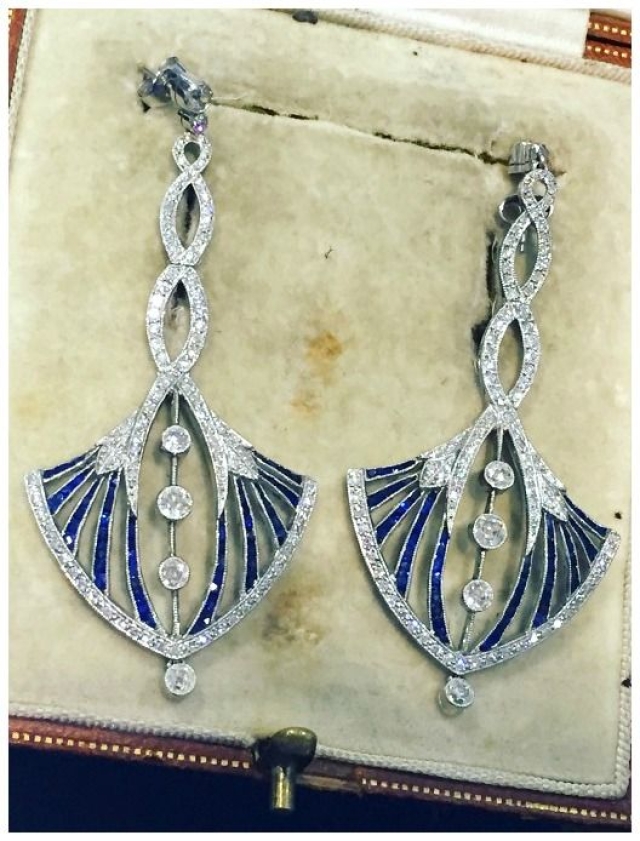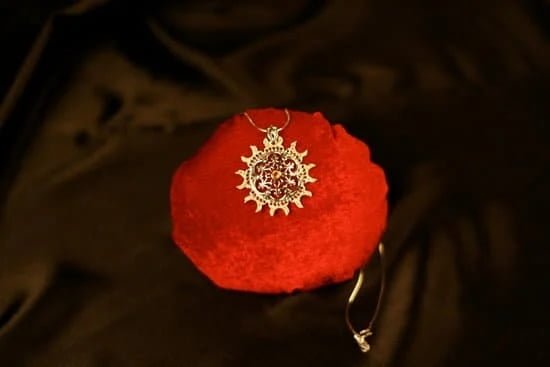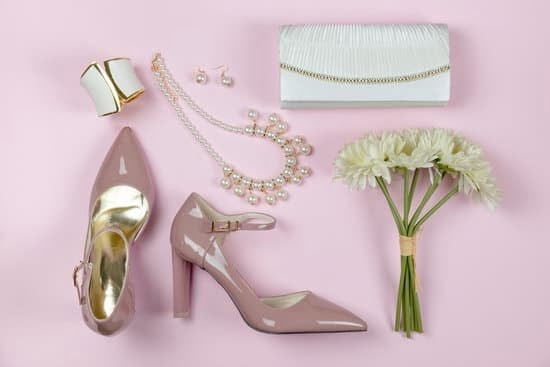Cleaning and polishing jewelry is something that can be completed at home to help preserve the look of your precious pieces. In addition to improving the aesthetic, cleaning and polishing jewelry helps maintain the structural integrity.
It prevents metal from tarnishing or eroding while also removing any dirt or oils that have found their way onto the surface. The benefits of cleaning and polishing jewelry are twofold, and when done correctly, can restore its original brilliance without wearing down the material.
Different Metals Require Different Products When looking to clean and polish jewelry at home, it is important to understand that different metals require different products. Silver requires a cleaner with ammonia or other active ingredients such as sodium carbonate, sour salt and baking soda. For gold-plated options, you should use a specialized cloth designed specifically for this purpose.
A mild soap like dishwashing liquid mixed with warm water works for both silver and gold-plated items, but harsher cleaners are not necessary in this instance. Be sure to rinse with clean water afterwards.
Expert Jewellery Cleaners Those who are not comfortable attempting to clean and polish their own pieces often turn to expert jewellery cleaners for assistance. This service includes an ultrasonic bath that shakes particle debris from crevices on intricate patterns as well as a hand steam bath which reaches in small spaces for an even deeper cleaning result.
Expert jewellery cleaners can then apply an anti-tarnish solution before rinsing off all residue with cold water followed by buffing with a soft cloth and polisher wheel where necessary. With regular maintenance schedule, trustworthy professionals can keep your jewels looking like new for years.
Types of Jewelry and Their Special Cleaning and Polishing Needs
Jewelry can be made from a wide variety of materials such as gold, silver, platinum and other metals. Each one requires a specific method of cleaning and polishing depending on the type of metal and stones they contain.
Gold jewelry is typically cleaned with lukewarm soapy water and a soft cloth, whilst silver should be treated with a mild silver polish that can remove tarnish build-up without scratching the metal. Platinum pieces are best polished with an alloy cleaner or special buffing solution to maintain its shine and sparkle.
Gemstones
To keep gemstone jewelry looking stunning, each stone needs to be cared for differently in order to cleanse its surface without damaging it. Certain gemstones like diamonds require only a light scrubbing with warm soapy water, whilst others such as opal are best cleaned using plain cold water due to their soft surface structure. As for pearl jewelry, ultrasonic cleaners prove the most effective way since this delicate item is easily impacted by more aggressive cleaning options.
Plated Jewelry
Where plated pieces are concerned it’s important to use caution when attempting to clean them from home as any form of abrasive cleaner could cause permanent damage if not used correctly or in excessive amounts. So instead of relying on chemicals to bring back life into these items look for polishing agents specially designed for use on plated jewelry.
These are usually milder in comparison yet just as effective at restoring any lost vibrancy its original prime state would have had.
Tools Needed for Cleaning and Polishing Jewelry
Having the right tools for cleaning and polishing jewelry is essential to keeping it looking its best. Having a tarnish-preventing cloth, such as Polkadot’s Tarnish Away Cloth, is essential for gentle but effective polishing. A soft-bristled toothbrush is also helpful in scrubbing away dirt and debris that has accumulated in small crevices. In addition, a soft lint-free cloth, such as flannel or microfiber, can be used to delicately dry off the jewelry after cleaning.
Cleaning Precious Metals
When it comes to precious metals like gold or silver, there are two techniques that can be applied to remove tarnish and restore shine – using soaking solutions or Jeweller’s rouge. Soaking solution consists of water and an ammonia-free detergent or vinegar which helps loosen dirt and quickly dissolve tarnish.
Jeweller’s rouge powder consists of a finely milled mixture of black iron oxide and olive oil that removes tarnish when lightly rubbed on with a cloth. As both methods can very easily damage gemstones or delicate pieces of jewelry, it’s important to proceed with caution when choosing which method to use.Jewelry should always be examined before using either method as they could scratch or ruin fragile pieces that have been treated or aged on purpose.
Cleaning Gemstones
Gemstones require different treatments depending on their type and composition. Generally speaking, most gemstones need to be wiped down gently with a soft damp cloth, avoiding any harsh scrubbing motions and chemical cleaners which could damage them. However hard stones such as sapphire or diamond can withstand regular kitchen dishwashing liquid while softer stones such as topaz need a more specialized cleaner designed specifically for that type of stone.
Storing Jewelry
In order for your jewellery to maintain its sparkle in the long term, it’s important to store it properly away from sources of moisture and heat which can cause tarnishing. It’s best practice never to store your jewelry together where some pieces may scratch each other over time due to rough movements in the box during transportation.
Making sure each piece is placed securely in individual compartments will not only prevent them from scratching each other but also help keep them dust free reducing the need for deep cleaning and polishing regularly. It’s good practice also to clean each piece after each wearing so dirt doesn’t accumulate between wearings.
Safety Guidelines When Cleaning and Polishing Jewelry
When it comes to cleaning and polishing jewelry, safety is of paramount importance. To begin with, the area you will be performing the cleaning and polishing in should be well-ventilated. Avoid using any harsh chemicals or abrasive materials which could cause discolouration or damage to the jewelry as this could significantly reduce its value. Additionally, it is highly advisable to wear gloves while working with jewelry for sanitation and health reasons.
Routine Cleaning Techniques
Aside from regular dusting of jewelry elements like rings and earrings, a number of methods can be used for routine cleaning of items such as necklaces or bracelets that may require deeper sanitization. A good start would be to create a mild detergent solution using warm water and a light dish soap.
Once the liquid is sudsy, submerge the jewelry into it for a few minutes before using a baby toothbrush to remove dirt particles. A soft cloth can then be utilized to gently polish the item afterwards whilst rinsing out excess liquid with cold water.
Specialized Cleaners
For more delicate pieces like gemstones or diamonds embedded within silver bands, windowsill cleaners often prove fruitful. Other specialized products are also available on the market specifically designed for jewelery cleaning which utilize specific compounds like ammonium carbonate that are gentle enough not to harm precious gems but ensure their sparkle is returned once again.
Also widely used are specialized sonic ultrasonic cleaners which vibrate millions of times per second dislodging dirt particles from crevices and getting rid off dirt buildup without causing scratches on jewellery surfaces.
Tips For Selecting the Right Cleaning and Polishing Products
1. Determine the type of jewelry you want to clean and polish.
Not all polishing products are suitable for cleaning and polishing every type of jewellery. Gold, silver, platinum, costume jewellery, beads and gemstones each require different types of cleaning, so it’s good to know what you are working with before selecting a product.
2. Research product labels to determine the ingredients in various polishing agents.
The ingredients playing a large role in how effective a cleaner or polish may be for your jewelry type. For instance some silver agents contain ammonia which can erode underlying base metals making them unsuitable for costume jewellery with significant metal components. Look for agents specially designed for different types of stones such as turquoise and opals as these are typically more delicate than other stones and require different approaches to cleaning and care.
3. Look out for items labeled “suitable for all metals” as they are generally safe to use on most types of jewelry.
These products combine several jewellery-care ingredients together in one product, often made with chemically inactive elements like beeswax that will not damage the jewelry’s surface or color over time but still do an excellent job when it comes to keeping your jewelry looking its best between professional cleanses.
Pros And Cons Of Various Cleaning And Polishing Methods
- Polish cloths: These cloths generally have a soft side which helps remove dirt from jewellery surfaces when lightly buffed against gold, silver or platinum items and can even be used on some gems like diamond pieces if mild enough
- Commercially available polishes: While commercially available polishes may allow deeper cleaning on thicker gemstones such as diamonds they have been known to fade softer stones like turquoise over time due their chemical composition.
- Homemade methods:
- Ultrasonic baths:
Steps For Cleaning Jewelry
Regularly cleaning and maintaining jewelry will ensure that it looks like new for years to come. Jewelry is often tarnished by dirt, oils, and sweat – all of which can be easily removed if you know how. Here are some steps for cleaning your jewelry correctly:
Methods Based on Material
The first step in properly cleaning your jewelry is to identify what type of material the item is made out of. Common materials used for making jewelry include gold, silver, platinum, copper, and gemstones. Depending on what material the item is composed of, different methods will need to be used for safely cleaning it.
Soaking With Cleansers
One effective way of cleaning many types of jewelry is to soak them in a solution of mild cleanser such as dish soap or a specialized jewelry cleaner solution. This must always be done in warm water; never hot as this could damage the metal or gemstones on the item.
Additionally, soaking too long (shorter than 30 minutes) may not provide adequate results while longer soaking times (more than half an hour) may create too much sudsing inside the container/bowl causing agitation and thus harming the item.
Use of Soft Toothbrush & Toothpaste
For semi-porous items such as gems with tiny crevices or metal details with raised surface areas use a soft toothbrush combined with toothpaste that acts like an abrasive cleaner without damaging particles that might dissolve due to chemical contact from cleansers. Gently brush these portions for several seconds ensuring no area is left unattended before finally rinsing with clean water and drying off using a soft cloth/towel.
While this method should only be used sparingly since toothpaste contains certain chemicals that could cause excessive wear over repeated use due.
Steps For Polishing Jewelry
- Step 1: Prepare the surface – Wipe off any dust, dirt or oils using a soft cloth.
- Step 2: Use jewelry cleaning solution – Soak items in the recommended jewelry cleaner solution.
- Step 3: Clean with a soft brush – Use a soft-bristled toothbrush to gently scrub the item in circular motions.
- Step 4: Rinse and dry completely – Dab away excess water with a lint-free cloth then let it air dry.
Jewelry is one of those things that looks best when it is polished and shined. Many people want to keep their jewelry looking as beautiful as possible, so they want to take every step necessary to make that happen. One of the most important steps in polishing and maintaining the look and value of your precious pieces is actually one of the simplest – cleaning them regularly.
Regularly cleaning your jewelry not only helps maintain its beauty but also helps protect it from wear and prevents damage from dirt, oil, and tarnish build up. It can be difficult to know how often you should clean your jewelry and what types of products you should use on different materials such as gold, silver, diamonds or pearls. But fear not. With just a few simple steps you too can have sparkling clean jewelry.
The first step is to prepare the surface by wiping off any dust or dirt with a soft cloth.Then choose your preferred Jewelry cleaning solution based on what type of material you’re working with – solutions for gold or silver work best with those respective materials – mix it up according to package instructions (if applicable). Soak the items in this solution for several minutes before removing them.
Then use a soft bristle toothbrush to gently scrub in circles around each item until all grime has been removed.
Once done, rinse the items thoroughly with warm water before drying them completely with a lint free cloth. Finally if possible set out on another lint free cloth somewhere airing well as this can help restore brilliance quickly after cleaning. Following these easy steps will help ensure that you get beautiful results each time you clean your jewelry.
Common Cleaning and Polishing Mistakes to Avoid
When it comes to cleaning and polishing jewelry, it is important not to make common mistakes. Most jewelry should be cleaned either with a mild detergent and water or just with plain water. To avoid damaging any of the pieces, never use an aggressive detergent or material that is too abrasive such as fine steel wool. It’s best to also avoid any harsh chemicals like bleach or ammonia.
Using Harsh Cleaning Products
When cleaning metal pieces like sterling silver, gold or platinum, one should make sure to use a small drop of (non-abrasive) dish soap instead of harsh chemicals such as bleach and ammonia solution commonly used by chemists for plating metals. Bleach and other chlorine solutions are especially not recommended because they will cause damage to precious metals if left on the metal for too long.
Not Cleaning Soft Stones
When cleaning soft stones such as opal, emeralds and pearls, they need extra care since these materials are particularly sensitive to acids found in many commercial cleaners. One should skip using them altogether and just stick with warm soapy water when washing precious gems. It’s also important that no hard materials come into contact with the stone while being washed in order not to damage its surface.
Using Too Much Pressure During Polishing
You may want your jewelry looking dazzlingly bright but reserve the use of excessive pressure during polishing─which could scratch the surface of your piece─for special occasions only. The most effective way to buff out tarnish is usually only requires light pressure so take care not to wear away any detailing when making your piece look shiny again; all you need is a soft cloth (or even a gentle brush).
Moreover, making sure not to use two-sided cloths─one side glossy for polishing side rough for scrubbing─as the latter can easily remove parts of our jewels along with dirt.
Conclusion
When wearing jewelry, its gleam and sparkle are eye-catching. To maintain that shine, cleaning and polishing jewelry is an important part of the care routine. This should be done at home using specific cleaners or professional services to avoid damage or deterioration of the precious materials. Doing this regularly will help preserve it for years to come. It also tackles germs and dirt deposits that naturally accumulate on the pieces from regular wear or long-term storage.
The impact regular cleaning and polishing has on jewelry cannot be overstated. Without this practice, dirt and sweat can take their toll on metals, making them dull or tarnished. Over time, germs accumulate around clasps due to contact with skin which can also lead to infections if not removed. Similarly, valuable gemstones need a bit of maintenance every now and again in order to prevent them from scratching or becoming dirty.
Jewelry pieces are often precious pieces that are passed down through generations in some families, so proper care is essential if we want them to remain in mint condition for years to come. Cleaning them ensures they retain their aesthetic value as well as original features such as engravings and settings that often tell stories about their owners’ pasts.
By taking a few minutes every once in a while to give our jewelry the polish they deserve, we can ensure that future generations will have these significant items in optimal condition just like we do now.

Welcome to my jewelry blog! My name is Sarah and I am the owner of this blog.
I love making jewelry and sharing my creations with others.
So whether you’re someone who loves wearing jewelry yourself or simply enjoys learning about it, be sure to check out my blog for insightful posts on everything related to this exciting topic!





